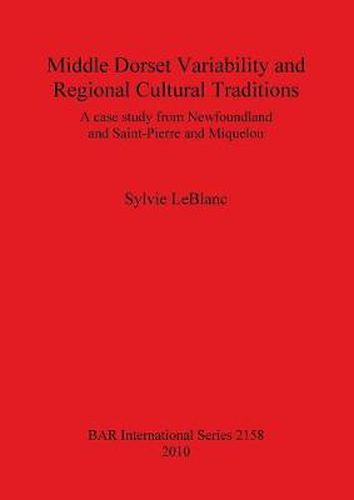Readings Newsletter
Become a Readings Member to make your shopping experience even easier.
Sign in or sign up for free!
You’re not far away from qualifying for FREE standard shipping within Australia
You’ve qualified for FREE standard shipping within Australia
The cart is loading…






This title is printed to order. This book may have been self-published. If so, we cannot guarantee the quality of the content. In the main most books will have gone through the editing process however some may not. We therefore suggest that you be aware of this before ordering this book. If in doubt check either the author or publisher’s details as we are unable to accept any returns unless they are faulty. Please contact us if you have any questions.
This research addresses the issue of variability within the Middle Dorset (2000-1100 B.P.) culture on the island of Newfoundland and on the island of Saint-Pierre in the French Archipelago of Saint-Pierre and Miquelon. Practice theory provides the conceptual framework to interpret variability and it is argued that the variability expressed in the Middle Dorset material record reflects the existence of distinct regional traditions. The comparative study of specific aspects of the lithic technology at eight Middle Dorset sites identified a strong process of regional specialization in the technological practices of these Palaeoeskimo people. Raw material use-patterns indicate a strong reliance on regionally available raw materials. Stylistic analysis also identifies discrete stylistic trends. Endblades take an emblematic role as most sites produced distinct and recognizable endblade types. With a few exceptions, the data reveal a high degree of technological homogeneity within individual sites and scarce evidence of contact between sites. At a larger scale, the evidence also indicates faint contact between Newfoundland/Saint-Pierre and Labrador Middle Dorset groups. In this research, the author suggests that the distinct regional technological practices reflect traditions of discrete territorially-defined social groups, much like the historical -muit groups in the Arctic. The picture proposed for the Newfoundland/Saint-Pierre region is one of a number of contemporaneous Middle Dorset groups, each living in discrete territories with their own technological traditions and specific developmental histories.
$9.00 standard shipping within Australia
FREE standard shipping within Australia for orders over $100.00
Express & International shipping calculated at checkout
This title is printed to order. This book may have been self-published. If so, we cannot guarantee the quality of the content. In the main most books will have gone through the editing process however some may not. We therefore suggest that you be aware of this before ordering this book. If in doubt check either the author or publisher’s details as we are unable to accept any returns unless they are faulty. Please contact us if you have any questions.
This research addresses the issue of variability within the Middle Dorset (2000-1100 B.P.) culture on the island of Newfoundland and on the island of Saint-Pierre in the French Archipelago of Saint-Pierre and Miquelon. Practice theory provides the conceptual framework to interpret variability and it is argued that the variability expressed in the Middle Dorset material record reflects the existence of distinct regional traditions. The comparative study of specific aspects of the lithic technology at eight Middle Dorset sites identified a strong process of regional specialization in the technological practices of these Palaeoeskimo people. Raw material use-patterns indicate a strong reliance on regionally available raw materials. Stylistic analysis also identifies discrete stylistic trends. Endblades take an emblematic role as most sites produced distinct and recognizable endblade types. With a few exceptions, the data reveal a high degree of technological homogeneity within individual sites and scarce evidence of contact between sites. At a larger scale, the evidence also indicates faint contact between Newfoundland/Saint-Pierre and Labrador Middle Dorset groups. In this research, the author suggests that the distinct regional technological practices reflect traditions of discrete territorially-defined social groups, much like the historical -muit groups in the Arctic. The picture proposed for the Newfoundland/Saint-Pierre region is one of a number of contemporaneous Middle Dorset groups, each living in discrete territories with their own technological traditions and specific developmental histories.